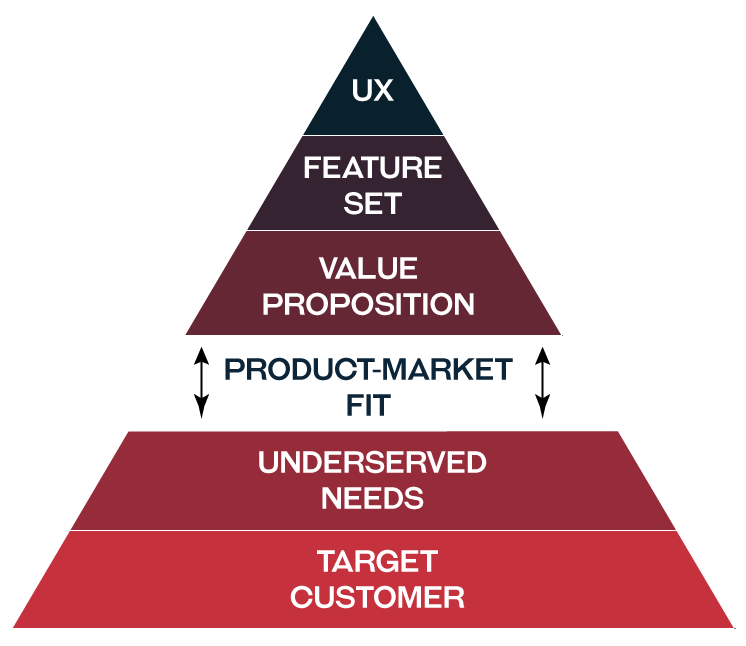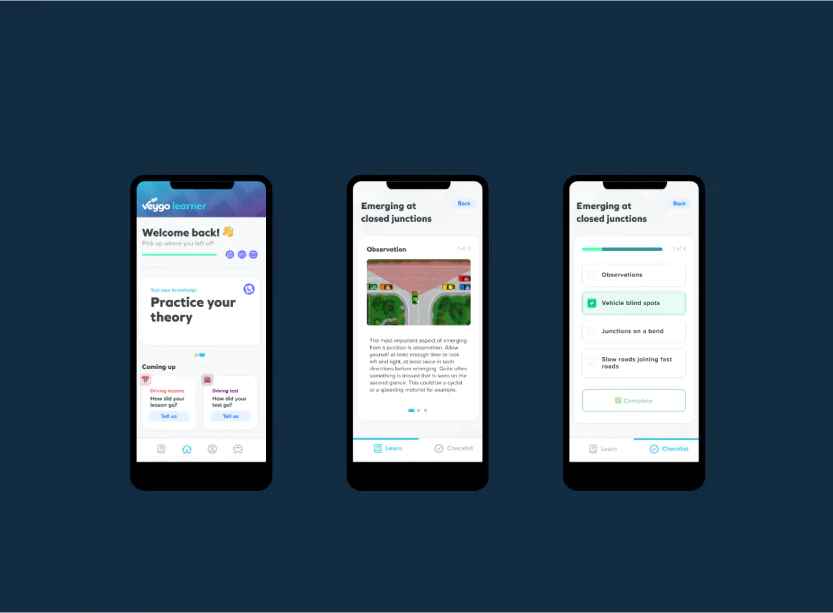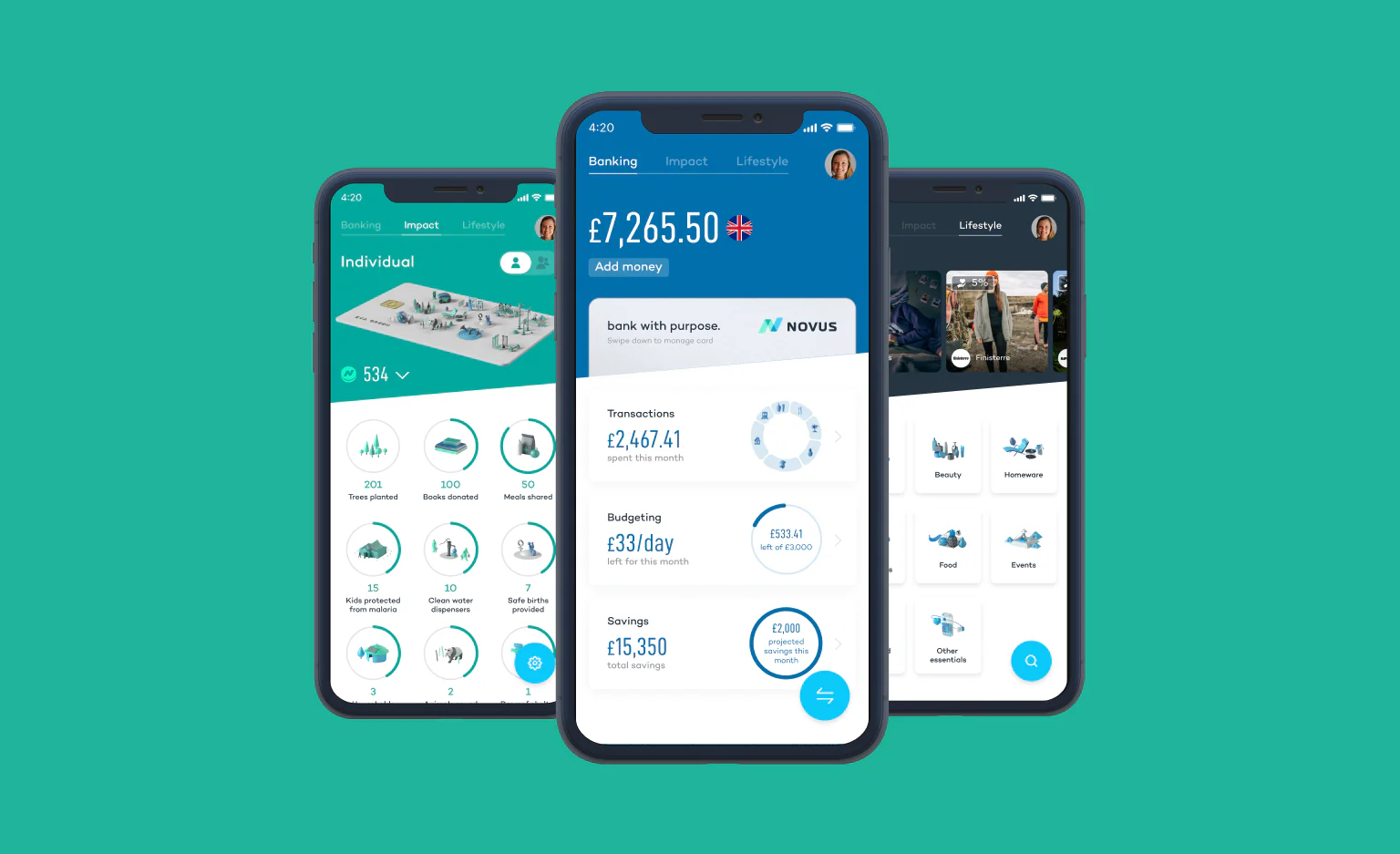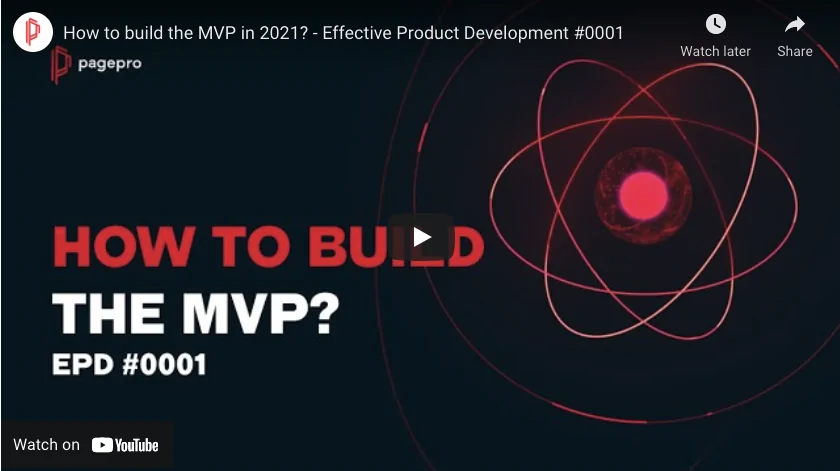Find a Product-Market Fit For Your Mobile App With The MVP

Introduction Into Product-Market Fit
Finding the product-market fit is one of the biggest challenges, especially now, when everything seems to have already been invented. The mobile app market grows larger every day, as does your competition.
It might seem discouraging but what if we told you that it’s not necessary to provide a 360 solution and compete with the biggest players or hottest startups to find your place in the market and have customers use your product?
Product-market fit isn’t about slotting into your idea of a successful business – it deals with uncovering the market’s needs.
What Is The Product-Market Fit Definition?
Product-market fit means the extent to which a product meets market demand. It’s a huge achievement for any business since it leads to landing a position in the market, and more importantly in the customer’s life.
Businesses still make the mistake of reaching the market without the proper preparation or investigating the customer needs. While it’s not impossible to succeed without a product market fit, your chances are much better when having one, especially in the mobile app business.
Why Is Product-Market Fit Important In The World Of Mobile Apps
When you look at the mobile apps world you quickly realize that the demand is huge – we check our phones an average of 58 times per day. Such exposure means a large customer base, but the competition is massive as well – only on Google Play Store you can find over 3.3 mln apps available. How to find a niche and define a product market fit in such a crowded place?
One of the most effective ways is to build an MVP and share it with customers, so they can rate it and share their opinions. MVP allows you to reach the market equiped with the most fundamental features and check if there’s a need for your app. And in time, develop it further to reach a broader audience, otherwise you won’t be able to satisfy that market.
But let’s start with some basics to ensure we get the context right.
Why Should You Care To Achieve Product-Market Fit?
The Rise And Fall Of BlackBerry
The world is constantly changing, just like the users’ requirements, preferences, and the way they interact with the product. To stay relevant, your app and product development have to evolve as well.
BlackBerry redefined the market with their first product: a two-way pager integrated with email. Although this initial version was limited compared to what smartphones are capable of today, it addressed a growing need in the market. The userbase craved on-the-go email access, and when BlackBerry’s employees started to use the internal version of their product it became clear that their concept had been a good market fit.
Still, BlackBerry recognized that the internal version wouldn’t be enough for a global audience. The company addressed this by refining the device, incorporating improved email technology, and fixing other shortcomings. At the same time, BlackBerry conducted market research and identified a niche for their product – busy professionals who relied heavily on email and valued fast communication with their employees.
BlackBerry’s success stemmed from the strategic approach – they identified a niche, addressed a specific problem, built a minimum viable product (MVP), tested it internally, and then adapted it to customer needs. This resulted in a product that perfectly fit the target market. However, their dominance was short-lived.
The arrival of the iPhone significantly impacted BlackBerry’s position. While the company remained strong in the corporate segment, its market fit weakened with every iPhone and Android update.

BlackBerry’s downfall shows how important continuous market research and adaptation are. When faced with competition, they focused on replicating their past success factors – strong battery life, security, and a physical keyboard – without validating if these still resonated with the evolving market.
“Apple reset what the expectations were. Conversations didn’t matter. Battery life didn’t matter. The cost didn’t matter. That’s their genius. We had to respond in a way that was completely different than what people expected,”
Mike Lazaridis
WANT TO FIT THE MARKET WITH YOUR PRODUCT?
How To Find Product-Market Fit With The MVP?
To achieve the product-market fit, involve the customers to gain feedback and deploy it in your product. And what’s the easiest way to gain it? Showcasing the initial product, so potential customers can tell you exactly how they feel about it.
Building the MVP (Minimum Viable Product) is the best way to evaluate your mobile app idea. Many popular apps, like Twitter and Spotify, were first deployed as MVPs and reached the market with their basic features. We recommend it to our customers, and among many benefits, it lets you hit the market fast, and gain feedback on how you can improve it.
Product-Market Fit Pyramid
Dan Olsen, product management trainer, and author of the book The Lean Product Playbook, created a Lean Product Process that defines how to fit the market with the MVP.
The hypotheses you make in one layer affect all layers above it. Once you’ve locked in your hypotheses for these layers, they are like a set of interconnected tectonic plates. If you move one of them after you’ve already built your product, much of the product you’ve built will no longer be relevant—like an earthquake that reduces a building to rubble.
Dan Olsen
Product-Market Fit Pyramid describes the entire process with 5 key components (spread into two categories: Market and Product), that are strictly related.
The top three layers are Value Proposition, Feature Set, and UX. These components of the MVP are validated with customer interviews and surveys to meet all the user’s needs.
The Lean Product Process starts at the bottom of the pyramid and moves upward. Advancing each layer requires taking specific actions:

- Determine your target customers
- Identify the underlying needs
- Value proposition
- Specify the MVP feature set
- Create the MVP
- Test the MVP
Determine Your Target Customers
The first step to building a successful app is identifying your target group – the ideal users who will benefit most from your product. Market segmentation and buyer personas are valuable tools to achieve this.
- Market segmentation involves dividing your potential customer base into smaller groups based on shared characteristics, such as demographics, interests, or behaviors. This helps you understand the specific needs and preferences within each segment.
- Buyer personas are fictional representations of your ideal customers. By creating detailed profiles that outline their goals, challenges, and motivations, you can develop a clear picture of who you’re building the app for.
Remember, your own opinion is not enough. To create something valuable for your users, you need to understand their needs and tailor your app accordingly.
Identify Underserved Customer Needs
Once your target audience is defined, try to understand them. This can be done by finding posts on forums or Facebook groups or reading testimonials in the App/Google Store under the apps that provide similar services. Customer support can be invaluable in learning about the customer experience expectations.
Henry Dreyfuss And Understanding Customers – A Product-Market Fit Example
In 1925, Henry Dreyfuss, a design pioneer, was employed by the owners of the new cinema in Iowa, who struggled to get customers. Even though they had met every need imaginable, incorporated a luxury interior, and were showing the newest movies, all their potential customers still chose to visit the old cinema.
One night, Dreyfuss decided to pay a visit to the old cinema and listen to the movie-goers. It turned out they were avoiding the new cinema because they weren’t comfortable with its rich design. Most of them were farmers, and they felt like they didn’t fit in.
The problem was defined – the cinema’s designer followed the newest trends without considering the customers. The next day Dreyfuss changed the elegant red carpet in front of the building for a much simpler floor mat, and soon enough the cinema was full of happy visitors. All because one person listened to customers.
The value proposition describes how your app differs from what’s already available on the market. Focus on developing your product idea. The customers are bound to compare you to the alternatives and if you don’t provide a good solution, they will simply abandon your app.

Specify Your MVP Main Features
As Steve Jobs said, focusing doesn’t mean saying yes to all the good ideas. Focus means to say no to the hundred good ideas only because they don’t fit the market.
You don’t have to develop all the features you plan to contain in the final product to evaluate your idea. Instead, define the most important ones that will provide enough value in the eyes of your users to validate if you’re heading in the right direction. The goal is to asses how well your product might perform and iterate until you have an MVP that the users find it valuable.
When one of our customers – Veygo reached us, they had an idea for a mobile app that was about to help learner drivers learn to drive by giving them a flexible way to practice, outside of formal lessons, in a parent/family member’s car whilst protecting the owner’s insurance.
They wanted to reach the market in just 6 weeks to quickly validate the idea, so we had to focus on the main functional requirements, that aimed to evaluate the product-market fit.

Build The MVP
The exact specifics of creating the MVP may vary depending on the app features, time, budget, and of course your target market.
The usual process of building the MVP with Pagepro consists of 4 phases:

1. Discovery
- Market/competitor research (we do this separately and then compare it to your research)
- Validating business/monetization models
- Deciding the technology stack
- Building scalability roadmap
For app MVP, we usually consider three options:
- Platform-specific native apps – These are coded for either iOS or Android.
- Cross-platform apps – As mentioned already before, these use Shared Development Kits, but can still run natively.
- Hybrid apps – a hybrid app is compatible with both iOS and Android. With this approach, you don’t need to write different codebases for each platform.
Most of the time, the best option is to build a cross-platform app.
| Native Development | PWA | Cross-Platform (with React Native) | |
|---|---|---|---|
| Pros | Outstanding performance – Great user experience – Uses full potential of platforms | – Easy to build – The most cost-efficient – Works on any device – Doesn’t require installation | – Faster time to market – Work on both Android and iOS – Works on any device – Easy to scale – Easier updates and maintenance |
| Cons | – Most expensive approach – Development takes much time – Hard to update and maintain – Requires different skills | – Not really a mobile app – Often weak on performance – Doesn’t support all mobile features – No push notifications on iOS | – Sometimes need native skills – Not always native-like |
| Verdict | Since the MVP doesn’t require, nor contain any heavy functionalities the cost of hiring native developer ( or two to appear on both platforms) and future cost of maintaining, as well as speed of implementing new features – the native approach is mismatched. | Because of lacking core features like push notifications a PWA approach was also a mismatch. | The MVP is a perfect use case for React Native. Thanks to React Native we could achieve all current and future project objectives in a shorter time, as well as it appeared to be much more cost-efficient choice. |
2. MVP UX And UI Design
- Mapping/Creating user journeys
- Wireframing & prototyping
- Creating graphical/branding elements
- Setting usability tests/metrics
Look at the visual components we’ve created for the Novus World while building an MVP app:


Novus World
Building a React Native App for Bank Securing The Future of Next Generations
READ CASE STUDY
3. MVP Development
- Meeting with the development team
- Building the framework/core logic
- Powerful & flexible backend
- Setting up the databases
- Ensuring enterprise-grade security
4. Release And Support
Once the MVP is up and ready, we’re running all the tests to make sure it doesn’t have any bugs before the launch.
Want to learn more about building the MVP? Check out our video:

Choose MVP To Measure Product-Market Fit
There are many ways to validate the idea, but MVP tends to be the most reliable for mobile apps due to:
- The opportunity to validate the idea with the end user
- You can reach users quickly with the basic working features.
- Analyze customer feedback.
- On top of affordable initial costs, as you can focus only on crucial features, each further investment is based on real market needs and better thought-out.
- It is safer to invest gradually in features that users consider useful
- It’s much easier to abandon a bad idea if you didn’t invest too much in it
- Enrolling investors becomes less daunting if you have a working product with a reasonable plan for growth
PoC vs MVP vs Prototype
| Proof of Concept | Prototype | Minimum Viable Product | |
|---|---|---|---|
| Goal: | Gives information on whether the idea is feasible | Visualises how a product will be built | Adapt the product based on feedback straight from the users |
| Time: | From days to months | Weeks | Months |
| Audience: | Researches & developers | Stakeholders, developer groups | End-users |
| Intended use: | In order to analyze the possibility of building the idea and its potential | To attract investors by the presentation of how the product will look and be used. | In order to find a product-market fit based on real end-user feedback. |
Quick poll
What would you prefer to use to validate your idea?
How To Conduct A Product-Market Fit For The Mobile App
The standard tactics to conduct a product-market fit in the mobile app market include:
Keyword Search Volume
Both Apple Store and Google Play stores track data, which is very valuable for business owners. The keyword Search Volume is the list of the most popular words searched in the app store, which lets you understand the needs even better. Check it before launching the app and make sure you will answer those needs.

Conversion Metrics
When the MVP app is up and running, track the conversion metrics related to the number of users the app is gaining. Keep an eye on the costs of acquisition, revenue, and customer lifetime value – this data allows you to optimize the app further and increase the conversion rates.
Retention And KPIs
The retention rate shows the percentage of users still using the app after a set time. Since the mobile app environment is saturated, retaining gained users should be the main priority, as hitting a certain number of retained users is crucial for the app’s success.
Find The Right Solution For a Successful Product-Market Fit
In the highly competitive mobile app market, achieving product-market fit is essential for survival. The success requires a data-driven approach that prioritizes understanding your target audience through market research and buyer persona development.
Launching with an MVP allows for early validation of core functionalities with real users, ensuring your app addresses a genuine need. A clear value proposition that solves a specific problem for your target market is paramount.
The MVP is only the first step; further improvements based on user feedback are crucial, no matter if you are a part of an established company or a startup. By diligently monitoring key metrics like acquisition costs, conversion rates, and retention, you can optimize your app and increase its chances of finding a good market with a product to grow your business with.
Need to work on product-market fit?
Read More
How To Build The Mvp? A Step-By-Step Process
Mvp Vs Prototype – Which One To Choose For Idea Validation?
Software Development Outsourcing – Essentials For Tech Leaders
What Are Super Apps And How To Make Them Work?
Sources
Top Google Play Store Statistics You Must Know
Blackberry’s Revenue From Fiscal Year 2004 To 2024
Mike Lazaridis – Losing the Signal



